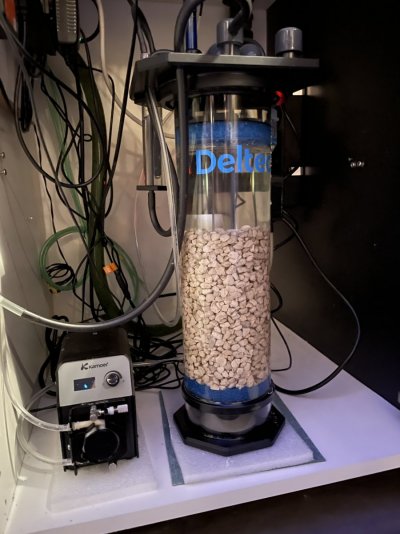Hi,
I started to use a calcium reactor (Deltec) since three weeks ago.
The aquarium is about 148 gallon and is a mix aquarium.
The PH in the reactor is between 6.5 and 6.7.
The PH probe is connected to the Apex.
The drip rate is about 3 drops/s and CO2 bubble count in the reactor is about 1bubble/3s.
Initially, when the calcium reactor was started, I dosed with two parts to rise the KH to about 8dH.
After that the desired value was reached I turned off the doser pump.
Some days later I found out that the KH dropped and so I increased the drip rate and the CO2 bubble count ( 3 drops/s and CO2 bubble count in the reactor is about 1bubble/3s.)
After a couple of days I found out that KH dropped even more, so I started to dose with two parts again to rise the KH.
Do you have any suggestion for the next step?

I started to use a calcium reactor (Deltec) since three weeks ago.
The aquarium is about 148 gallon and is a mix aquarium.
The PH in the reactor is between 6.5 and 6.7.
The PH probe is connected to the Apex.
The drip rate is about 3 drops/s and CO2 bubble count in the reactor is about 1bubble/3s.
Initially, when the calcium reactor was started, I dosed with two parts to rise the KH to about 8dH.
After that the desired value was reached I turned off the doser pump.
Some days later I found out that the KH dropped and so I increased the drip rate and the CO2 bubble count ( 3 drops/s and CO2 bubble count in the reactor is about 1bubble/3s.)
After a couple of days I found out that KH dropped even more, so I started to dose with two parts again to rise the KH.
Do you have any suggestion for the next step?
















